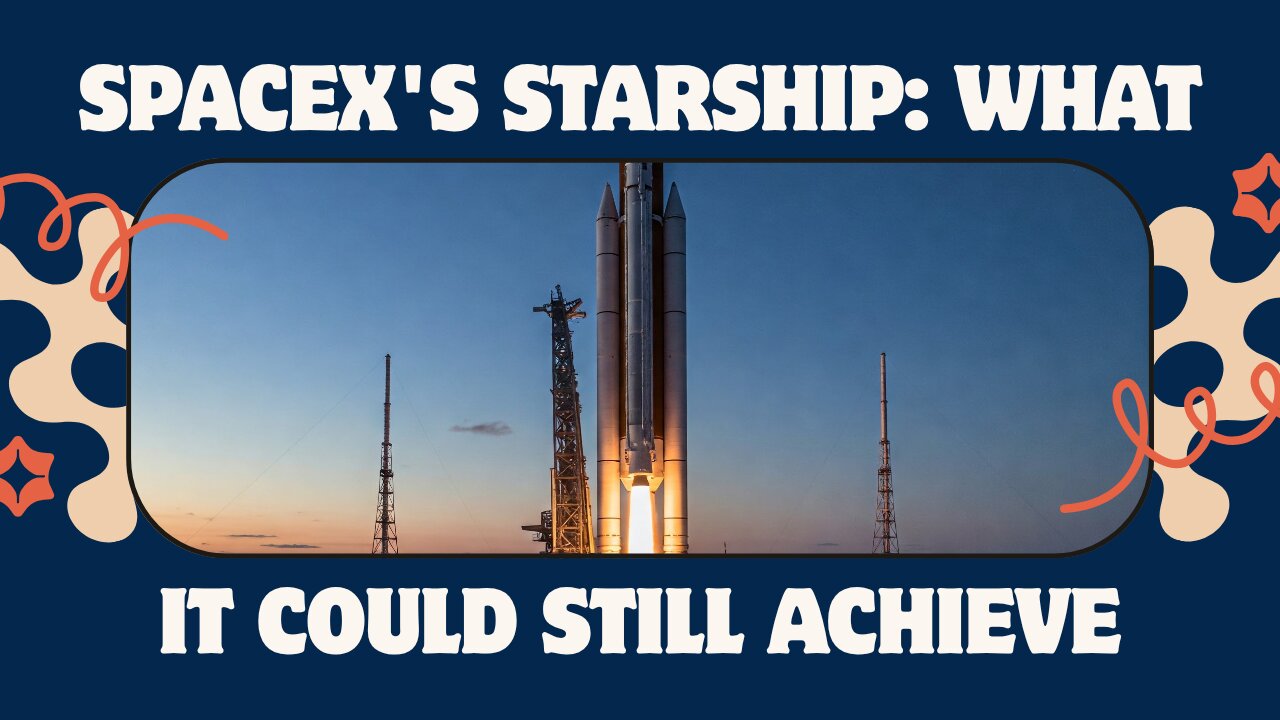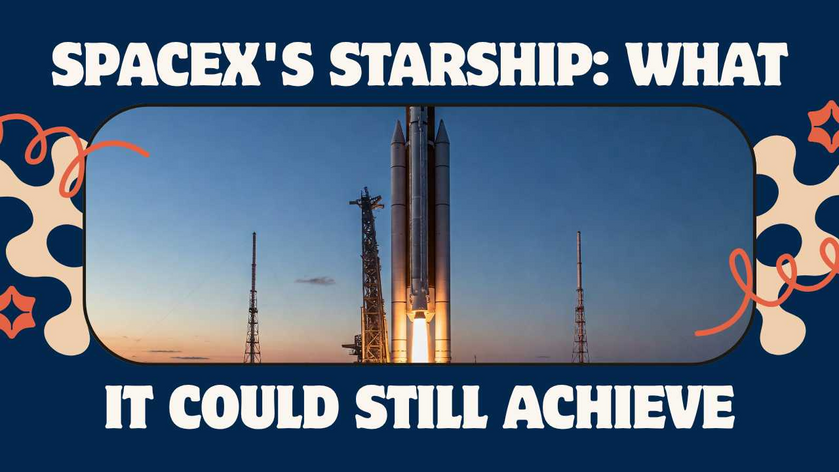Earlier this week, the Space Exploration Company conducted yet another test-to-failure of its current signature development project, Starship. SpaceX expected to lose both stages of this two-stage rocket ship, but not so fast, and not this way. Specifically, the booster blew up, and the “ship” (second stage) burned up. Does that spell doom for Starship? Sorry to disappoint Elon Musk’s detractors, but no. Tests-to-failure are the only way to find out for certain what can go wrong, especially with a new rocket ship. But had SpaceX run its development project differently, they would be in a much better financial position. They would also be further along in overall development than they are today. They could even be helping the official American space program in ways they never gave themselves a chance to imagine.
What is Starship, and what does SpaceX want to accomplish?
Starship is, or SpaceX wants it to be, the heaviest space liner and space freighter ever built. Indeed it would be the first rocket ship to carry passengers or freight on a scale comparable to commercial aviation. Or military airlift, for that matter – because the U.S. military wants to use it to move troops and equipment halfway around the globe, before an enemy would even know what’s happening.
There’s just one catch: Starship isn’t ready, and won’t be ready for years yet. The reason it’s not ready is that SpaceX, under the obsessive-compulsive leadership of founder Elon Musk, is following a single track. That company wants a fully reusable rocket that its shipyards (now incorporated as an independent city!) can turn out orders of magnitude faster than Boeing or Airbus can turn out airliners and air freighters. But first they must make their rocket reusable. The booster they lost in the last test was on its second flight. But they haven’t achieved that with the second stage.
Why is SpaceX so obsessed and compelled with reuse, mass production, and rapid “cadence” (how often they launch their rockets)? Because Elon Musk has one dream above all, and is impatient to realize it. He wants to build a self-sustaining city on the planet Mars – not as a mining colony but as a second home for humanity. That project will require thousands of Starships carrying crew, equipment – and rocket fuel, for he wants to refuel in space.
The problem with the Starship program
SpaceX has a fundamental problem it didn’t always have. When they developed their current “workhorse” rockets – Falcon Nine and Falcon Heavy – they did offer “intermediate” services as soon as they could. Falcon Nine reuses its booster but not its second stage; Falcon Heavy has three boosters and can reuse at least two, if not all three. Falcon Nine especially has taken “market share” from nearly ever other rocket ship built. Its reusable booster lets it launch payloads at less than half the cost of its competitors.
Falcon Heavy was supposed to be retired by now; Musk hoped that Starship would take its place. But Musk knows he cannot even entrust his own payloads – Starlink® satellites – to Starship. In racing to make Starship re-usable, he has left it un-usable for any useful work! The perfect, in short, has become the enemy of the good.
The YouTube influencer “Everyday Astronaut,” in covering Integrated Flight Test Nine (the latest), pointed this out. Why, he asked, didn’t SpaceX develop an intermediate version of Starship that would reuse the booster but not the ship? They could have been putting his new, heavier Starlink® satellites into orbit by now, on a grand scale. They could also be lifting other, more ambitious payloads – modules for the VAST company’s new Haven space station. (Starship is more than twice as wide as a Haven module, even today.)
But even “Everyday Astronaut” didn’t think of everything.
What SpaceX should have done with the concept
SpaceX is, of course, running its own space program. Advantage: the company has its own goals and can pursue them, independently of often fickle government agencies. (Any organization whose headship changes hands once every eight years – or even four – is necessarily fickle.) Disadvantage: SpaceX takes on the onus of making a long-range plan, and making that plan adaptable. This they haven’t done. A vague vision of a city on Mars is not a long-term plan.
They have the bare outlines of a mission profile: lift a ship into orbit, refuel it, and send it to Mars. But even SpaceX admits that refueling a single ship for a Mars transit and landing will require ten launches of orbital “tankers.” They need “tankers” because they never thought to build a refueling station in orbit.
But consider an intermediate version of Starship with a second stage designed to carry payload but not return to Earth. Why not equip that stage with fuel and thrusters to steer it once it’s in orbit? Then the first such stage enters orbit, drops its payload, and stays in orbit. The next such stage will catch up to it and latch onto it, forming another, larger object. Other second stages do the same – creating a cluster of shells, already in orbit, waiting for the next step.
What next?
If experience with Falcon Nine and Heavy are any guide, SpaceX could launch over 200 of these second stages into orbit within five years. In that time, they would perfect the booster, which is much more valuable, with all its 33 rocket engines. More importantly, among the payloads would be the modules for a first-generation Haven space station. (VAST might even have made it larger, to fit more snugly inside a Starship second stage.)
Now the value of cooperation and collaboration becomes apparent. That new space station – or a second like it – would be the ideal construction shack for turning those 200 second stages into several much larger stations. Shipfitters could unfasten the engines and fit out those massive shells with new, interconnecting interiors. Then, after a few more heavy-lift missions, they could mount a number of ships on a giant wheel, which would spin for gravity. The wheel’s hub would provide docking, loading, and unloading services – or microgravity laboratories or factories.
Now SpaceX would have a complex, or a fleet, of stations providing Earth-normal gravity and workspace. At least one would become a scrapyard to turn millions of “space junk” objects into ballast, counterweights, or reusable metal. The rest would become a shipyard in space, to offer repair of existing satellites, or support further development of a reusable second stage.
Looking further ahead
The best immediate use of Starship with a reusable second stage would be as a suborbital space liner or freighter. Almost as important would be ferrying of passengers and freight – including fuels – into low Earth orbit. A proper space program needs permanent stations in low (or medium) Earth orbit and geostationary or geosynchronous orbit (GEO). Dedicated ships, deriving their design from the Starship second stage, would ferry passengers and freight to and from GEO, and deploy satellites at various orbital levels. Equally dedicated ships would clean up the “space junk” in a big operation to remove an ever-present hazard. An LEO or MEO station would be the perfect base for “orbital traffic control.” This function would protect cargo – and lives – in addition to keeping “space junk” to a minimum.
The next important program would be one for asteroid deflection and capture. Already NASA is tracking an asteroid longer than the Eiffel Tower is tall – Apophis. This rock will pass very close to Earth in 2029. Worse, Apophis will disappear in the Sun’s glare – and might come out of it to hit New York, or London! Had SpaceX followed this proposed program, President Trump’s vaunted Space Force would already have a base ready to divert Apophis.
Obviously the first reusable second stages could bring back those spare engines, removed from the original second stages, for refurbishment and reuse in new “ships.” Thus, out of sheer practicality, almost nothing need be lost.
The real Mars colony wagon
If SpaceX, or NASA, or a NASA/ESA/JAXA coalition, still wants to build a city on Mars, then it needs a better plan than anything anyone has suggested thus far. Sending thousands of Starships on Hohmann minimum-energy orbital transits to Mars will not accomplish the goal. Even as large a heavy lifter as Starship is not and can never be a space-borne Conestoga wagon. True, the late Wernher von Braun proposed a “wagon train to Mars” (and famously couched his proposal as a novel). But the correct metaphor for colonizing Mars is not the settlement of the American West, but the first Voyages of Discovery by Erik the Red, his son Leif, Cristoforo Colombo (Christopher Columbus), Giovanni Caboto (John Cabot), Amerigo Vespucci, and the incomparable Fernão de Magalhães (Ferdinand Magellan).
So SpaceX should be collaborating with NASA to design a space-to-space colony wagon with nuclear thermal engines. Then they should build not only one, but a fleet of three, or preferably five. (Magellan started with five ships, of which one survived to return to Spain.) These ships would carry nuclear power plants, to power not only the new engines but also electromagnetic radiation shields. A space-to-space ship never lands, so those ships would carry Starships to serve as landing craft.
That Martian city would serve the new asteroid mining industry, plus a metallurgy industry to rival Pittsburgh. So Elon Musk’s dream would take shape – but the colonists would be there to work.
What can SpaceX do now?
SpaceX might seem to have wasted a prodigious amount of time, by not developing a heavy-lift capability along these lines. But if it starts now, then better late than never. Apophis is still on its way, and even if it doesn’t hit Earth in 2029, it could set up a collision for 2068. Nor is Apophis the only “near Earth asteroid” on record, by any means.
The Starship second stage is already at a point where it can achieve orbit and stay in orbit. Even if it can’t return to Earth, it could start carrying true payloads any time SpaceX wishes. The development program outlined here probably can’t divert Apophis by 2029 but could almost certainly divert it by 2032. Beyond that, it could lead to replacement space stations far sooner than currently envisioned – and cleaning up the “space junk” before it brings down every satellite in a cascade of collisions called the Kessler Syndrome. Along the way, the project could yield enough revenue to make it self-financing.
But without this kind of project, the perfect remains the enemy of the good. Now that Elon Musk has left his “Department of Government Efficiency” in other hands, and resumed full-time leadership of his companies, he has time to think about improving the image of SpaceX, while enabling it to do many more useful things.
Link to:
The article:
https://cnav.news/2025/06/01/editorial/talk/spacex-starship-what-might/
Video:

VAST Company Home:
Article on Apophis by NASA:
https://science.nasa.gov/solar-system/asteroids/apophis/
Declarations of Truth:
Declarations of Truth Locals Community:
https://declarationsoftruth.locals.com/
Conservative News and Views:
Clixnet Media





















